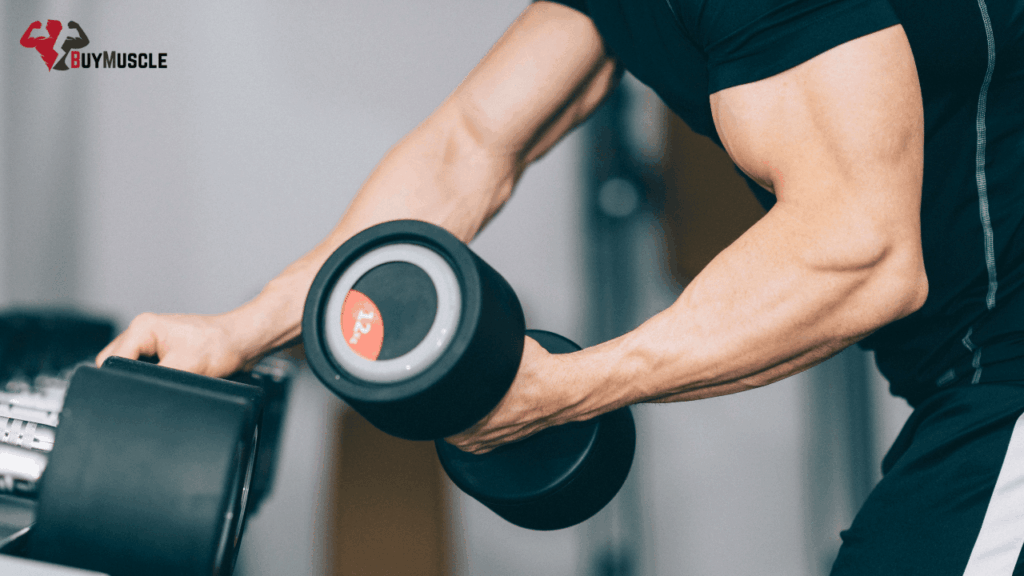Training the back and biceps together is a time-tested strategy for building a powerful upper body. Incorporating back and bicep workouts into your routine takes advantage of how these two muscle groups work synergistically during pulling movements, making it a highly efficient training approach.
For those seeking to build bigger arms and back, a structured program focusing on intensity, volume, and recovery is essential.
Why Train Back and Biceps Together
Pulling exercises activate both the back and biceps, making them natural training partners. Movements such as rows, pull-ups, and pulldowns primarily target the back but also engage the biceps as secondary movers. By combining them, you create a session that allows for maximum mechanical overlap and muscular recruitment.
Training these muscles together also enhances efficiency in the gym. A bicep and back gym routine saves time while delivering comprehensive upper-body stimulation. Additionally, the biceps often respond well to pre-fatigue. After heavy back work, isolation exercises can be more effective at recruiting muscle fibers in the arms.
At the same time, back training benefits from being performed with a full range of motion and stable energy, particularly early in the workout.
Key Principles for Size and Strength
A successful routine to build bigger arms and back must emphasize both compound and isolation movements. Compound exercises such as deadlifts, pull-ups, and barbell rows develop total strength and muscular thickness, especially in the back. Bicep isolation work, on the other hand, allows for precise tension and hypertrophy.
Progressive overload is crucial. Whether increasing the load, adding more reps, or extending time under tension, the stimulus must escalate over time to drive adaptation. Combining heavy lifts with pump-focused accessory work ensures a complete training stimulus for both the nervous system and the muscular system.
Tailor rest periods to the goal of each set. For heavy compound movements, rest for two to three minutes to allow near-maximal recovery and performance. For hypertrophy-focused exercises, rest sixty to ninety seconds to maintain intensity while promoting muscle growth. This approach balances the goals of strength and hypertrophy within the upper-body workout plan.
The Best Back and Bicep Routine

Frequency
Train back and biceps one to two times per week, depending on your overall split and recovery capacity. A push-pull-legs routine or upper-lower split integrates well with this format.
Warm-Up (5 to 10 minutes)
Begin with light activation and mobility work to prepare the shoulders, arms, and thoracic spine for pulling movements. Examples include:
- Band pull-apart to activate the rear delts and upper back
- Arm circles to warm up the shoulders
- Light rowing motions with cables or bands stimulate blood flow
Workout
This workout emphasizes the best exercises for the biceps and back, balancing strength development with hypertrophy. Adjust weight and reps based on your training level.

Deadlifts (4 sets of up to 6 reps)
This foundational movement builds full back thickness, traps, spinal erectors, and glutes. It also improves grip and posterior chain strength, anchoring any serious back-day workout for size.
Weighted Pull-Ups or Lat Pulldown (3 sets of 8 to 10 reps)
These exercises target lat width and upper back engagement. Use strict form and a full range of motion for maximum lat activation.
Bent-Over Barbell Rows or T-Bar Rows (3 sets of 6 to 8 reps)
These mid-back focused lifts enhance depth and muscular density. Maintain a strong torso position to isolate the back and avoid relying on momentum.
Seated Cable Rows or Chest-Supported Dumbbell Rows (3 sets of 10 to 12 reps)
These controlled rowing variations allow for peak contraction and muscle engagement without excessive strain on the lower back.
Barbell or EZ-Bar Bicep Curls (3 sets of 8 to 10 reps)
These staple movements build overall bicep mass and are essential to a complete arm and back hypertrophy session.
Incline Dumbbell Curls or Preacher Curls (3 sets of 10 to 12 reps)
These emphasize the long head of the biceps, contributing to arm peak and full development.
Hammer Curls (2 to 3 sets of 12 to 15 reps)
Hammer curls target the brachialis and forearms, enhancing arm thickness and grip support for back training.
Optional Finisher
Lat pulldown and rope curls, performed as a superset for three rounds, create a high-volume, pump-inducing finish to your gym routine for strength and size. This method also reinforces the mind-muscle connection and muscular endurance.

Recovery and Support Tips
Recovery is just as important as training when it comes to hypertrophy and strength. Prioritize quality sleep, ideally, seven to nine hours per night, to allow growth hormone release and muscular repair. Protein intake should be sufficient to support new tissue development, generally around 1.6 to 2.2 grams per kilogram of body weight per day.
Plan your split to avoid overlapping muscle group stress. A push-pull split, for instance, allows the back and biceps to recover fully before the next session. If you train back and biceps twice weekly, ensure at least 48 hours between sessions.
Stretching the lats, traps, and biceps after training helps improve mobility and reduce tightness, supporting long-term joint and tendon health. Following this method helps you achieve consistent progress in building your back and biceps over time.
Frequently Asked Questions
Can beginners follow this back-and-bicep workout?
Yes, but beginners should reduce volume and ensure they learn proper form. Starting with fewer sets and lighter loads helps build a foundation for future progress.
Should I do biceps or back first in the workout?
Back should come first, as it requires more energy and compound movement execution. Biceps are best trained afterward with focused isolation exercises.
How long should the workout take?
Including warm-up and cool-down, the full session typically takes 60 to 75 minutes. Adjust rest periods based on training goals and time availability.








